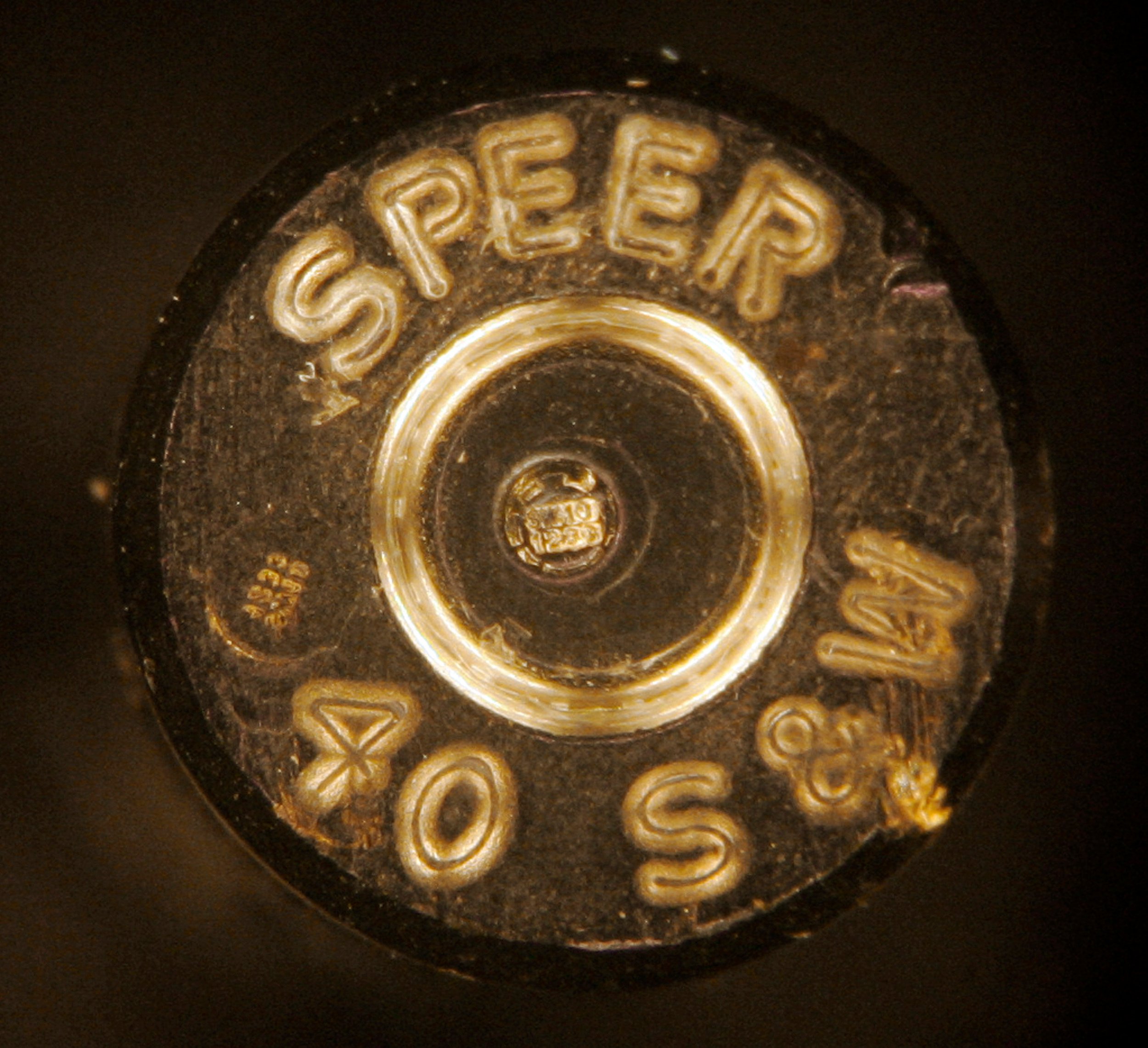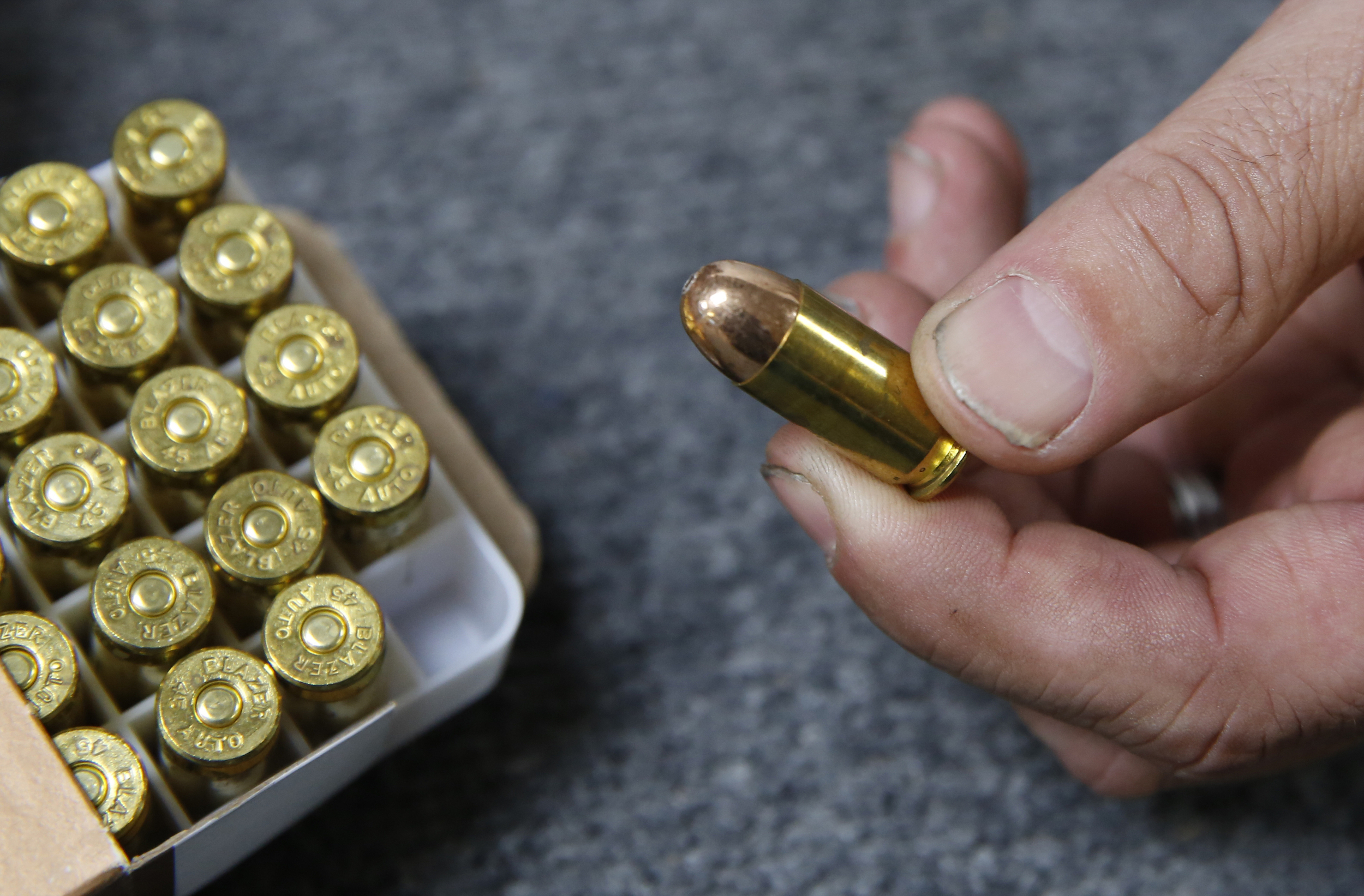When law enforcement investigates a shooting, the evidence left at the scene can make or break a case. In ideal situations, there are witnesses, surveillance video, and sometimes even a firearm and a suspect. Not all cases turn out that way. Often, investigators are left with only a victim and a few spent casings.
But what if a handful of brass was all investigators needed to solve a crime? Enter microstamping, a process that imprints a unique identifier on bullet casings when they fire, theoretically allowing law enforcement to identify the firearm used in a shooting. The technology is celebrated by gun reform advocates, who say it could help solve more shootings, and laws to expand its use have passed in three states and the District of Columbia. It’s also garnered intense criticism from opponents who question its effectiveness and say it places an unnecessary burden on gun manufacturers and owners. The debate led one reader to ask:
How feasible is “microstamping technology” really? I’ve seen many gun safety sites claim it’s feasible, but I’m hearing the opposite elsewhere. I’m also wondering, should the technology come to pass, what if a criminal just steals casings that have your stamped cartridge from the firing range?
Below, we break down the basics.
First things first: What is microstamping technology?
Microstamping uses lasers to engrave alphanumeric and geometric codes on a gun’s firing pin, the piece of hard metal that strikes an ammunition cartridge’s primer and makes it fire. When a firing pin is microstamped, it imprints its unique code on the cartridge. This code is tiny, but when viewed under a microscope provides a unique identifier that can link a spent casing to a gun.

To be clear, microstamping deals with the cartridge casings that hold bullets before they’re fired, not the actual bullets. In most models of guns, the casings are ejected after they’re fired.
Microstamping provides order to a process that already happens when a gun fires. Standard firing pins leave their own patterns — known as toolmarks — on spent casings. But connecting markings on spent casings to the gun that fired them requires access to the weapon itself.
“All you’re doing in microstamping is organizing those in a way that’s easily recognizable,” said Joshua Horwitz, co-director of Johns Hopkins University’s Center for Gun Violence Solutions. “So instead of having random toolmarks, you’re organizing toolmarks in a way that gives you letters, numbers, and geometric coding.”
Todd Lizotte and Orest Ohar, engineers with experience in laser technology, developed the early microstamping technology more than two decades ago. Their company, TacLabs, develops machines that can mass produce engraved firing pins, as well as software to generate, handle, and read the resulting codes. Lizotte and Ohar relinquished their patent rights to the core technology in 2013, in the hopes that gun manufacturers would use it.
How could it help solve crimes?
The backbone of investigating gun crimes is the Bureau of Alcohol, Tobacco, Firearms and Explosives’ tracing program. Using a gun’s unique serial number, investigators can identify where a firearm was first sold, and to whom.
But with current methods, investigators need the physical firearm and access to its serial number to initiate a trace. Proponents see promise in microstamping because it allows investigators to use the microstamped codes to identify a gun used in a shooting without recovering it.
The hope, ultimately, is to solve more gun crimes, which police struggle to do. In 2020, the national murder clearance rate — or the share of cases that result in an arrest or are closed for other reasons — fell to 51 percent, its lowest point in 50 years, according to a CBS News analysis of FBI data. That figure is even worse for nonfatal shootings. Supporters also hope the technology could help law enforcement solve more gun crimes without increasing surveillance in the disproportionately Black neighborhoods where shootings are most common.
“It really could help laser focus on that weapon and the chain of custody for that weapon rather than an entire neighborhood,” said Kami Chavis, a professor of criminal justice at William and Mary Law School and a former prosecutor. “It could also deter crime because you know that the weapon that you have, when it fires, it’s going to leave this microstamp mark.”
Do any states require microstamping?
It’s complicated.
In 2007, California passed a law requiring gun manufacturers to include microstamping capabilities in all new models of handguns introduced in the state. But the law has had little impact since it was signed. Gun manufacturers and pro-gun groups have fought the law in court and continued selling new manufactures of existing models instead of introducing new ones.
Amid California’s struggles to fully implement its microstamping law, the District of Columbia passed a microstamping law in 2009, but after that, interest in the technology cooled for more than a decade. That is until New York Governor Kathy Hochul signed a microstamping law in June 2022 as the state responded to the Supreme Court’s decision in Bruen. The law requires the state Division of Criminal Justice Services to examine the “technological viability” of microstamping. If the technology is deemed viable, new semiautomatic pistols sold in New York will eventually need to be capable of microstamping.
A few weeks later, lawmakers in New Jersey approved a similar but less stringent law. Gun dealers will be required to sell microstamping-capable firearms in addition to their other inventory, and the state will offer a 10 percent instant rebate (up to $30) on any microstamping firearm. The requirement, like New York’s, will only take effect after the state attorney general investigates the technology’s viability and certifies that microstamping firearms are “commercially available.”
Seems like there are questions about microstamping’s viability. Does the technology work?
The evidence is mixed. Much of the debate over microstamping has centered on the legibility of codes stamped on individual casings. The limited research that exists has shown that the codes can sometimes be illegible, depending on conditions like how many times a gun has been fired. The type of firearm or ammunition may also influence the quality of the impressions.
An initial evaluation in 2004 by forensic scientist Lucien Haag presented to the Association of Firearm and Toolmark Examiners tested microstamping technology on four different, high-powered guns that he thought would challenge the technology. Haag fired some firearms hundreds of times and others as many as 1,200 rounds. He found the codes legible on nearly every spent cartridge. The results of that evaluation have long been touted by gun reform proponents, but even Haag has said his observations were not definitive. The study was not peer-reviewed, and Haag did not seek to publish it in a journal.
A peer-reviewed study published two years later by Suffolk County, New York, firearm and toolmark examiner George Krivosta delivered ostensibly more negative results. In a test that involved installing the same engraved firing pin in 10 pistols of varying manufacturers and firing each 10 times, Krivosta found that just 54 of the 100 codes were fully legible. On the other 46, at least one character was indecipherable. Krivosta then fired 1,000 rounds to examine the wear on the firing pin engraving itself and found that it was still intact and legible but less sharp after his test. He did not evaluate the resulting codes.
Lizotte, who developed the technology, and gun reform groups have attempted to discount Krivosta’s study — or at least the public perception of it. They argue that his methodology was flawed because he used older firearms and a firing pin with an engraving that had not been calibrated for the guns he used. But Haag, whose work proponents tout as evidence to support microstamping, also used uncalibrated pins and older firearms.
“I never felt what little I did rose to the level of a peer-reviewed paper,” Haag said. “Then it starts getting cited as the definitive work. And then when I showed up explaining what were the limits, and what were the misrepresentations, then I was attacked.”
Lizotte is listed as a co-author on at least two other published peer-reviewed studies in the same journal as Krivosta, with results that showed the technology to be more reliable, though imperfect. One of those, published in 2012, examined 3,000 rounds fired from three different guns using 10 different types of ammunition. In the case of two higher-cost firearms, a Sig Sauer and a Taurus, more than 90 percent of the alphanumeric codes left on spent casings were legible. In a cheaper model Hi-Point, between 68 and 74 percent were legible.
In an interview with The Trace, Lizotte acknowledged that some microstamped codes are going to be illegible because of the unpredictable nature of the inner workings of firearms. To guard against this, they developed redundancies, like engraving an additional geometric code or using codes that must add up to a certain total, like a credit card, so that missing digits can be determined by their context. And Lizotte argues that even if close to half of codes are partially illegible, as Krivosta found, it would still provide more information than investigators currently have.
Can the codes be altered?
Opponents of microstamping — like the National Shooting Sports Foundation, the Congressional Sportsmen’s Foundation, and the National Rifle Association — have long argued that the technology is a waste of time because the engraved firing pin code can be defaced or removed, as demonstrated in Krivosta’s 2006 study, which found that engravings could be removed with a common sharpening stone.
But defacing the firing pin engraving would be an involved process, Lizotte and other proponents of microstamping say: It would require taking apart the firearm, removing the firing pin, and shaving its tip enough to remove the engravings but not enough to render the gun inoperable. It would be easier to replace the firing pin altogether, as the parts are inexpensive, largely unregulated, and don’t require a background check to purchase.
Methods aside, some subset of people determined to make their firearm untraceable may attempt to do so, and they already do, by removing or defacing their gun’s serial number. But existing research suggests most people accused of committing violence don’t take this step: A 2015 study by Duke University and the University of Chicago found that among guns taken from alleged gang members, only 5.4 percent had defaced serial numbers.
Can you be framed?
Our reader asked if a criminal could stock up on spent casings at a gun range and then use them at the scene of a shooting to throw investigators off their trail. To do this, a person would have to find a gun range, gather the spent brass, and take it with them to the shooting they’d planned in advance. That level of premeditation is not impossible, but it’s unlikely.
The tactic also probably wouldn’t be successful. The shooter would need to plant cartridges of the same make and model. The cartridges would also need to be fired roughly around the same time, because casings oxidize with age. On top of that, the shooter would need to be sure that they didn’t leave fingerprints or DNA on the spent casings, and that they were swapped out for their own casings before first responders arrived.
This type of tampering is possible with or without microstamping, according to Chavis, the former prosecutor: “Somebody could bring certain evidence and plant certain evidence at a crime scene. That’s not to say that it never happens, but it’s pretty rare.”
There are also other scenarios that could come into play, like the practice of “reloading,” which involves repurposing spent cartridges into new live ammunition. If someone did that with spent cartridges from a gun range, it could possibly include microstamped casings.
Are there other concerns?
Aside from the reliability of the technology itself, there are other challenges that could get in the way. Fully utilizing microstamping would likely require most crime labs to purchase higher-powered microscopes, called Scanning Electron Microscopes, which provide the clearest images of the microstamped codes but cost upward of $70,000. Haag, the longtime firearms examiner, said many crime labs won’t take that step.
There are also questions about law enforcement utilization. Other forensic tools, like the ATF’s National Integrated Ballistic Information Network, a database that allows for the comparison of ballistic evidence like toolmarks, suffer from limited use despite being promoted by the ATF.
And on the manufacturing side, there will be some costs to manufacturers and gun buyers. In addition to producing, calibrating, and engraving firing pins, manufacturers will need to set up a standardized system of generating codes, linking the codes to their firearms’ serial numbers, and maintaining the records. Estimates for the exact cost vary. Some range from as low as $3 to $10 per firing pin, depending on the scale of production. But the NRA and the National Shooting Sports Foundation say it could cost up to $200 per firing pin.
How would microstamping apply to guns already in circulation?
This is perhaps the biggest question surrounding microstamping’s feasibility.
There are already more firearms in circulation in the United States than any other country in the world. The Small Arms Survey, a research project at the Graduate Institute of International and Development Studies in Switzerland, estimated in 2018 that civilian guns numbered upward of 393 million. Gun sales spiked in 2020, so the number has surely grown. Last year alone, Americans bought more than 16 million firearms, most of which were handguns.
Even if microstamping was mandated by the federal government tomorrow, it would likely only apply to newly manufactured guns, not the millions of firearms already in circulation in the United States. None of the proposed or passed laws have applied to guns already in circulation. However, the fact that recently purchased firearms are disproportionately used in crimes suggests that a microstamping requirement on new guns could have an outsized effect.
“You can’t compare crime guns to the overall stock of firearms,” Horwitz said. “In general, crime handguns tend to be younger. And so we do think that over five years, you’d start seeing an impact.”
Even if New York deems microstamping viable and requires it on all new semiautomatic handguns manufactured or sold in the state, it’s likely to have only a small impact on crime guns. In New York, more than 70 percent of crime guns are trafficked from out of state, largely from states with far weaker gun laws, and that trend will surely continue. That number increases to roughly 90 percent when looking specifically at handguns that were recently purchased before being used in crimes.

Given the high number of crime guns that are trafficked over state lines, it would likely take the federal government, or at least the states where trafficked guns are most frequently sold, requiring microstamping for the technology to significantly increase clearance rates.
In New Jersey, the law is even less stringent, opting to incentivize microstamping instead of requiring it. How many microstamping guns are sold will largely depend on New Jerseyans’ appetite for them.
While some gun owners are sure to and have argued that microstamping is an invasion of privacy and a violation of the Second Amendment, Lizotte maintains that it is a positive for law-abiding gun owners: “As a gun guy, as a Second Amendment guy, as a conservative from New Hampshire — [I] look at this as purely a way in which we target that 1 percent of people that buy firearms and traffic instead of hurting the 99 percent of us who just understand our Second Amendment rights and want to maintain it.”

